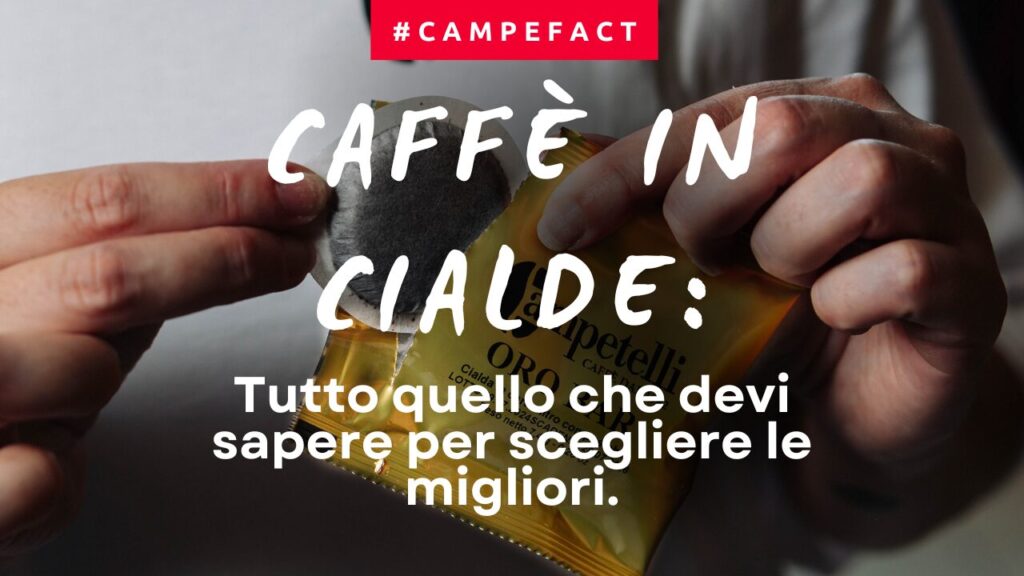All coffee pods are not the same-the most obvious difference is often in the blend contained. Each blend is a balance of flavor, body, and intensity designed to deliver a different in-cup experience. Understanding the characteristics of the most popular blends will help you choose the one best suited to your tastes, avoiding random purchases and maximizing the quality of each extraction. In this guide we look at the main types of blends found in pods and see how to identify the perfect one for you.

Also read our guide on coffee pods
Discover and learn more about the different formats and systems used for coffee pods.
What is meant by mixture in waffles
When we speak of a “blend,” we are referring to the combination of different varieties of green coffee, often from different geographical areas, that are roasted and ground to achieve a precise flavor profile. Unlike single-origin coffee, which expresses the characteristics of a single origin, blends aim to balance aroma, acidity, body, and aftertaste. In pods, the blends are designed to ensure:
- Consistency in taste: each wafer should offer the same sensory profile.
- Compatibility with the ESE method: grinding and roasting are optimized for rapid and homogeneous extraction.
- Wide variety: from soft and sweet to intense and full-bodied blends to satisfy every palate.
The most common types of waffle mixes
Blend 100% Arabica
The 100% Arabica blend is chosen by those who like a smooth, fragrant coffee with low bitter acidity. It offers complex flavor notes, which can range from fruity to floral, with a lighter body than blends with Robusta. It is ideal for those seeking a milder sensory experience, although the crema in the cup will generally be less thick.
Arabica and Robusta Blend (blend)
Blends combining Arabica and Robusta offer a balance of body, aroma, and intensity. The percentage of Robusta contributes to creaminess, making the coffee fuller and more persistent. These are the most popular blends because they meet a wide range of tastes, suitable for both those who like the sweetness of Arabica and those who appreciate the strength of Robusta.
Blend with a high percentage of Robusta
Blends with a high percentage of Robusta are perfect for those who want a strong coffee with a strong and persistent flavor. The crema in the cup is thick and compact, the aroma is more intense, and the caffeine content generally higher. They are ideal for coffee drinkers primarily in the morning or as an energizing boost throughout the day.

If you haven’t tried our waffles yet…fix it now!
How to choose the right blend for you
The choice of blend in the pods depends mostly on your personal taste, but also on the time of day and the type of experience you want to achieve in the cup.
- For those who like sweetness and elegance: 100% Arabica blends are perfect, especially if you are looking for complex flavors and less caffeine.
- For those who want balance and versatility: Arabica/Robusta blends offer a good compromise, with rich aroma, full body, and lingering crema.
- For those seeking intensity and strength: high Robusta blends are ideal for energizing, strong-tasting coffee.
Also consider the machine you use: if you extract coffee with systems that emphasize body and crema, such as lever machines or ESE compatibles with optimal pressure, blends with Robusta give more satisfying results. If, on the other hand, you prefer delicate aromas, a 100% Arabica blend will be more suitable.
FAQ on waffle mixes
Which wafer blend is best for creamy espresso?
If you want thick, lingering crema, go for blends with 20-40% Robusta (even 50% if you’re looking for the classic “bar”). Robusta favors cream and body, while Arabica brings sweetness and flavor. Prefer medium-dark roast and ESE 44 mm pods packaged in a protective atmosphere (individually bagged): freshness greatly affects crema. In practice: heat the cup and do a short water flush to stabilize the temperature; use medium-sweet water (about 75-150 mg/L fixed residue) and stop brewing around 25-30 ml. Note: More crema does not automatically mean better coffee, but it is a good indicator of body and freshness.
Which waffle blend to choose if I want less caffeine?
On average, 100% Arabica coffees have less caffeine than blends with Robusta and are the easiest choice if you want a “lighter” cup without sacrificing aromatic complexity. If you are very sensitive, consider decaffeinated (clean, round profiles exist today). With ESE pods the dose is fixed: to further reduce caffeine stop the extraction first (a ~20-25 ml ristretto contains less caffeine per cup, but more concentrated than a long one). Roasting has little effect on caffeine content with respect to species (Arabica/Robusta) and cup volume consumed.
Are there specific blends for compostable pods?
Yes: Many roasters offer the same blends as traditional pods in compostable versions as well. Coffee quality should not change with the same blend and roast; however, materials and oxygen barrier may vary, possibly impacting shelf-life. Check for certifications (e.g., “OK compost” INDUSTRIAL or HOME) and your municipality’s rules: paper pods are often compostable, while the outer bag is compostable only if explicitly certified (otherwise another delivery follows). To maintain freshness, prefer single bagging and small sizes. In the cup, manufacturers calibrate grind and dose to avoid perceptible differences.
Do stronger wafer blends alter the bitter taste?
It tends to be: more Robusta and stronger roasts increase intensity and bitterness. However, this is not synonymous with unpleasantness: a well-designed blend can be full but harmonious. If the taste veers too much toward bitterness, try this: stop brewing at 25-30 ml (avoid long ones), do a short vacuum flush to stabilize the temperature (or lower it if the machine tends to get too hot), use water that is not too hard, and clean the circuit regularly ( rancid oils accentuate bitterness). If you are looking for “strong but not bitter,” go for Arabica-based blends with Robusta around 20-30% and medium-dark roast with cocoa/hazelnut notes.


